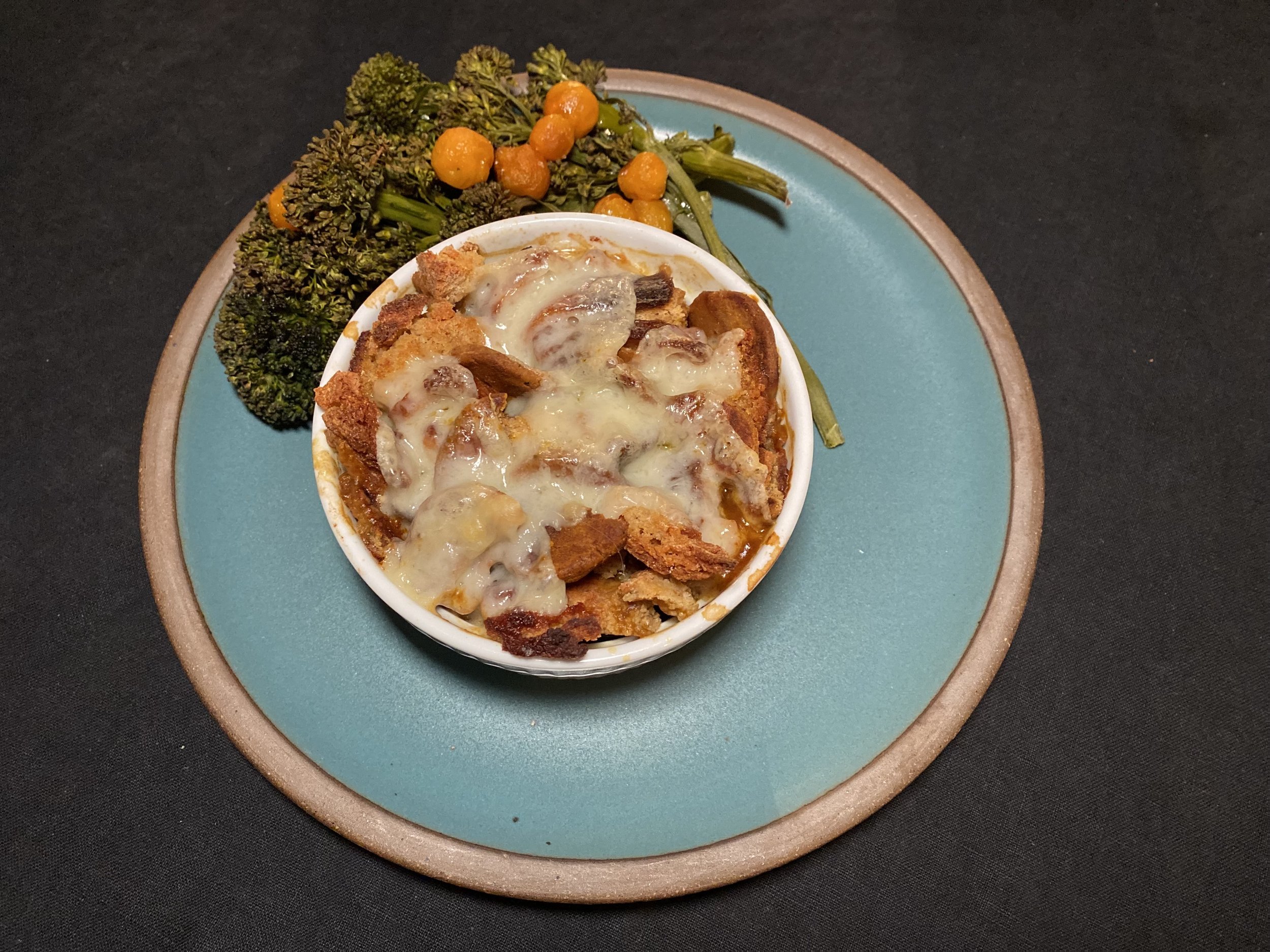Onions have for millennia been a cheap, easy to grow food source. So, the pervasiveness of onion soup across written human history is perhaps not surprising. Two simple, affordable ingredients— onion and water— can come together to make something satisfying and delicious. Onion soups appear in ancient Roman texts and medieval cookery. But, the beloved French onion soup found on so many menus today has origins in 17th century France. Traditionally made richer with the (again cheap) protein of beef bone, French onion soup was simple fare. Recipes for the bread and cheese topping appear later, in the early 20th century. Perhaps it is the popularization of this richer version that drew the adoration of the American palate.
A good vegetarian version can be hard to replicate, often involving many steps, tricks, and extra ingredients that take the simple, rustic pleasure away in the sheer complexity of cooking.
In my own journey with severely energy-limiting chronic illness I have had to learn to pace any cooking throughout the day, starting early in the morning and doing tiny bits throughout the day. As it turns out, this process is perfect for a simple, vegetarian French onion soup.
The key ingredient in this recipe is simply, time, and a dash of forgetfulness of the soup stewing low and slow on the stove.
vegetarian French onion soup
serves two
Ingredients:
1 red onion sliced
1/2 yellow sweet onion sliced
1/2 teaspoon salt
2 teaspoons coconut aminos (or soy sauce)
1/4 cup pumpkin puree
1/2 teaspoon ghee or butter
about two cups no sodium/salt vegetarian broth (I make mine weekly from veggie scraps I save in the freezer but store bought is fine)
optional: 1 bay leaf, 1 piece star anise, 1 garlic clove, 1 teaspoon vermouth, 1/2 teaspoon five spice powder
torn crusty bread (may I recommend my gluten free lentil bread) and about 1.5 oz shredded alpine cheese per serving
Method:
Melt ghee on low a medium sauce pan, add in pumpkin, the optional spices and ingredients if you are using any from that list, salt, and coconut aminos.
Put a lid on your medium sauce pan and forget about it for about 10 minutes.
Then, add in your onion slices. Put the lid back on and forget about it for about an hour. Check on it every 15 minutes at first to get a sense of your burner and how fast it is caramelizing.
At this point the onions should have released about a half cup of liquid and smell great. Remove the star anise and bay leaf if using. Stir onions around and forget about them for another half hour to forty-five minutes.
Check on them and magically you should have lots of liquid. Stir around again. Add about a cup of broth. Put that lid back on and forget again for about an hour.
Check on them and you should see a viscous broth. If it is not thick, turn up the heat a hair. Add the rest of your liquid and forget about the pot for … hours… until dinner. If dinner is approaching soon, you can turn up the heat.
Preheat your oven to 450F. About an hour before dinner remove the lid and pull up the heat just below a simmer. Taste and adjust salt as needed.
Spoon into ramekins that are oven safe. Put in the oven for about 20 minutes without bread or cheese to warm up further and thicken.
Remove, top with bread and cheese, and broil for about 2 minutes (don’t forget about them now!) until golden and bubbly.
